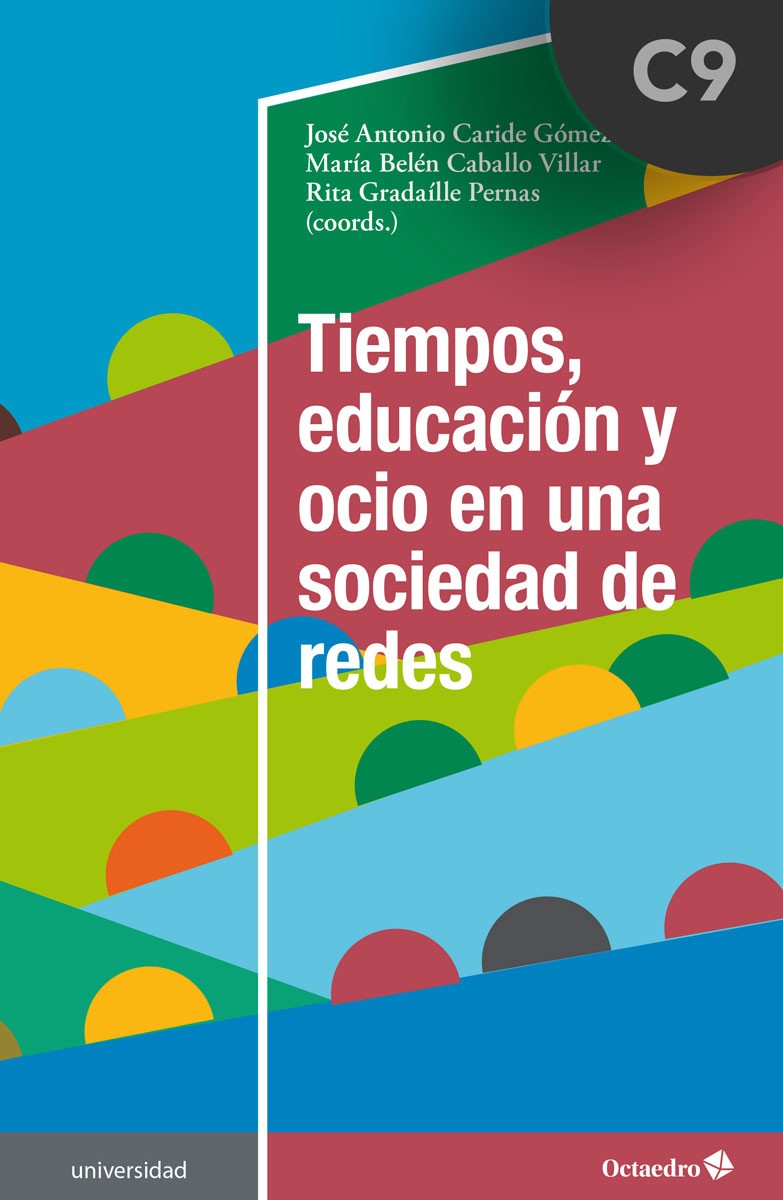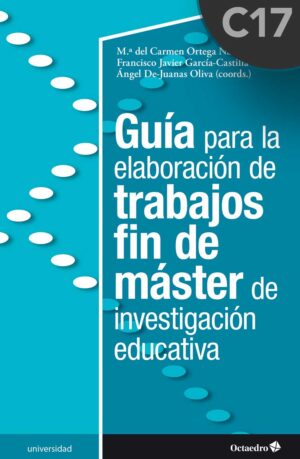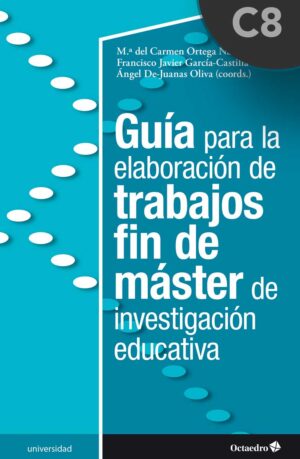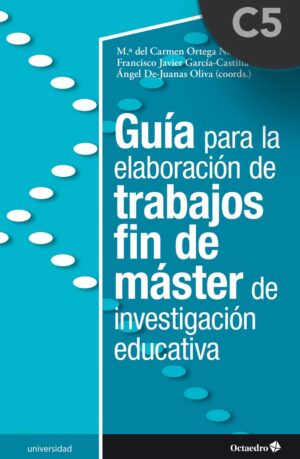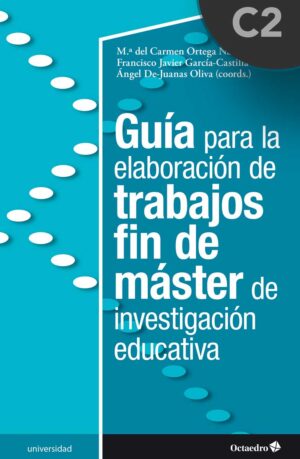FICHA TÉCNICA
Fecha de publicación:
22/03/2024
DOI: https://doi.org/10.36006/16264-09
Título del libro: Hacia una pedagogía del tiempo en la sociedad-red
URL del libro: Hacia una pedagogía del tiempo en la sociedad-red
ISBN:
DOI del libro: https://doi.org/10.36006/16264
Abstract
El aquí y el ahora del ocio de las personas mayores y su contribución al envejecimiento satisfactorio cobran sentido a la luz del impacto del género, el capital cultural y la importancia atribuida al ocio. Desde este novedoso enfoque, el itinerario de ocio se convierte en un factor determinante a la hora de explicar cómo el ocio pasado y otros aspectos relevantes en la historia de vida de cada persona modulan el ocio y sus posibilidades en etapas tardías de la vida.
Palabras clave
Autores
Cómo citar
Monteagudo, M. J. (2020). Factores determinantes del ocio de las personas mayores y su contribución al envejecimiento satisfactorio. En J. A. Caride, M. B. Caballo y R. Gradaílle (Coords.), Tiempos, educación y ocio en una sociedad de redes (pp. 153-170). Octaedro. https://doi.org/10.36006/16264-09
Referencias bibliográficas
- Adams, K. B., Leibbrandt, S. y Moon, H. (2011). A critical review of the literature on social and leisure activity and well-being in later life. Ageing & Society, 31, 683-712.
- Aparicio, V. A., Carbonell, A. y Delgado, M. (2010). Beneficios de la actividad física en personas mayores. Revista Internacional de Medicina y Ciencias de la Actividad Física y el Deporte, 10(40), 556-576.
- Atchley, R. C. (1989). A continuity theory of normal aging. The Gerontologist, 29, 183-190.
— (1993). Continuity theory and the evolution of activity in later adulthood. En: Kelly, J. R. (ed.). Activity and Ageing: Staying Involved in Later Life (pp. 5-16). Londres: Sage Publishing. - Ateca, V. M. (2009). El capital humano como determinante del consumo cultural. Estudios de Economía Aplicada, 27(1), 87-110.
- Baltes, P. B. y Baltes, M. M. (1990). Psychological perspectives on successful aging: the model of selective optimization with compensation. En: Baltes, P. B. y Baltes, M. M. (eds.). Successful Aging: Perspectives from the Behavioural Sciences (pp. 1-35). Reino Unido: Cambridge University Press.
- Bohórquez, M. R., Lorenzo, M. y García, A. J. (2014). Actividad física como promotor del autoconcepto y la independencia personal en personas mayores. Revista Iberoamericana de Psicología del Ejercicio y el Deporte (RIPED), 9(2), 533-546.
- Bourdieau, P. y Wacquant, L. (2008). Una invitación a la Sociología reflexiva. Buenos Aires: Siglo XXI.
Comisión Europea (2010). Estrategia Europa 2020: Una estrategia para un crecimiento inteligente, sostenible e integrador [COM(2010)2020]. - Cuenca, M. (2005). Ocio solidario. Documentos de Estudios de Ocio. Bilbao: Universidad de Deusto.
- Cuenca, J., Kleiber, D. A., Monteagudo, M. J., Linde, B. D. y Jaumot-Pascual, N. (2014). The Influence of Meaningful Leisure on the Subjective Well-being of Older Adults in the Basque Country of Northern Spain. World Leisure Journal, 56(2), 120-129.
- Cuenca-Amigo, M., Aristegui, A., Cuenca, M. y Amigo, M. L. (2016). The importance of leisure in older adults living in Spain. Annals of Leisure Research, 20(2), 222-239.
- Cumming, E. y Henry, W. (1961). Growing old. The process of disengagement. Nueva York: Basic Books.
- Driver, B. L., Brown, P. J. y Peterson, G. L. (1991). Benefits of Leisure. State College, PA: Venture Publishing.
- Driver, B. L. y Bruns, D. H. (1999). Concepts and uses of the benefits approach to leisure. En: Jackson, E. L. y Burton, T. L. Leisure studies: prospects for the 21st century (pp. 349-369). State College, PA: Venture Publishing.
- Echazarreta, R., Maulini, C., Migliorati, M. e Isidori, E. (2016). Adolescents and lifestyles. A study on students’ leisure in the province of Rome. Pedagogía Social. Revista Interuniversitaria, 28, 127-139.
European Union (2014). Special Eurobarometer 378: Active Ageing. European Union Open Data Portal. UE 2014. http://data.europa.eu/88u/dataset/S1002_76_2_EBS378. - Fernández, G., Rojo, F., Forjaz y Rodríguez, V. (2012). Envejecimiento activo y participación en actividades de ocio entre adultos mayores residentes en comunidad y en institución. En: Monteagudo, M.
- J., Cuenca, J. y San Salvador del Valle, R. (coords.) (2014). Aportaciones del ocio al envejecimiento satisfactorio (pp. 39-66). Documentos de Estudios de Ocio, 50. Bilbao: Universidad de Deusto.
- Fernández-Gutiérrez, M. y Calero, J. (2019). Los efectos no monetarios de la educación sobre el ocio: análisis del uso del tiempo en España. Estudios sobre Educación. Gale OneFile: Informe Académico.
- Freund, A. M. y Baltes, P. B. (2002). Life-Management Strategies of Selection, Optimization, and Compensation: Measurement by Self-Report and Construct Validity. Journal of Personality and Social Psychology, 82(4), 642-662.
- Grant, B. C. y Kluge, M. A. (2012). Leisure and healthy ageing. En: Gibson, H. J. y Singleton, J. F. (eds.). Leisure and ageing. Theory and practice (pp. 129-142). Champaign, IL: Human Kinetics
- Havighurst, R. J. (1961). «Successful ageing», presidential address given to the division of maturity and old age. The Gerontologist, 1, 8-13.
- Heintzman, E. y Patriquin, E. (2012). Leisure and social and spiritual wellbeing. En: Gibson, H. J. y Singleton, J. F. (eds.). Leisure and ageing. Theory and practice (pp. 159-175). Champaign, IL: Human Kinetics.
- Hutchinson, S. L., Loy, D., Kleiber, D. A. y Dattilo, J. (2003). Leisure as a coping resource: Variations in coping with traumatic injury and illness. Leisure Sciences, 25, 143-161.
Hutchinson, S. L. y Nimrod, G. (2012). Leisure as a resource for successful aging by older adults with chronic health conditions. The International Journal of Aging and Human Development, 74(1), 44-65.
Iwasaki, Y. (2008). Pathways to Meaning-Making Through Leisure-Like Pursuits in Global Contexts. Journal of Leisure Research, 40(2), 231-249. - Iwasaki, Y., Messina, E. S. y Hopper, T. (2018). The role of leisure in meaning-maikng and engagement with life. The Journal of Positive Psychology: Complementary Science for Health and well-being, 13(1), 29-35.
- Janke, M. C., Nimrod, G. y Kleiber, D. A. (2008). Leisure activity and depressive symptoms of widowed and married women in later life. Journal of Leisure Research, 40(2), 250-266.
- Jaumot-Pascual, N., Monteagudo M. J., Cuenca, J. y Kleiber, D. A. (2016). Gender differences in meaningful leisure of older adults in Northern Spain. Journal of Leisure Research, 48(1), 83-103.
- Jaumot-Pascual, N., Monteagudo M. J., Kleiber, D. A. y Cuenca, J. (2018). Gender Differences in Meaningful Leisure Among Older Adults: Joint Displays of Four Phenomena. Frontiers. Psychology, 9, 1450.
- Kleiber, D. A., Bayón, F. y Cuenca, J. (2012). La educación para el ocio como preparación para la jubilación en Estados Unidos y España. Pedagogía Social. Revista Interuniversitaria, 20, 137-176.
Kuykendall, L., Ty, L. y Ng, V. (2015). Leisure engagement and subjetive well-being: a meta-analysis. Psychological Bulletin, 1412, 364-403. - Lazcano, I., Madariaga, A. y Doistua, J. (2010). El envejecimiento activo y su incidencia en la experiencia de ocio. ADOZ. Revista de Estudios de Ocio, 33, 117-147.
- Lennarston y Silverstein (2001). Does engagement with life enhance survival of elderly people in Sweden? The role of social and leisure activities? The Journals of Gerontology: Series B, 56, 6(1), S335-S342.
- Liechty, T., Yarnal, C. y Kerstetter, D. (2012). «I want to do everything!»: leisure innovation among retirement-age women. Leisure Studies, 31, 389-408.
- Lifshitz, S., Nimrod, G. y Bachner, Y. G. (2019). Spirituality and wellbeing in later life: a multidimensional approach. Ageing & Mental Health, 23(8), 984-991.
- López, F. J. y Morata, T. (2015). Ocio, comunidad y resiliencia. En: Salvador, A. y Silva, C. (coords.). Trauma, contexto y exclusión. Promocionando resiliencia. (pp. 49-59). Granada: GEU.
- Mannell, R. C. y Snelgrove, R. (2012). Leisure and the psychological well being and health of older adults. En: Gibson, H. J. y Singleton, J. F. (eds.). Leisure and ageing. Theory and practice (pp. 143-158). Champaign, IL: Human Kinetics.
- Morgan, N., Pritchard, A. y Sedgley, D. (2015). Social Tourism and well-being in later life. Annals of Tourism Research, 52, 1-15.
- Monteagudo, M. J. y Cuenca, M. (2012). Los itinerarios de ocio desde la investigación: Tendencias, retos y aportaciones. Pedagogía Social. Revista Interuniversitaria, 20, 103-136.
- Nicolaisen, M., Thorsen, K., Eriksen, S. H. (2012). Jump into the void? Factors related to a preferred retirement age: gender, social interests, and leisure activities. International Journal of Aging and Human Development, 75(3), 239-271.
- Nimrod, D. B. (2014). The benefits of and constraints to participation in seniors’ online communities. Leisure Studies, 33(3), 247-266.
— (2016). Innovation Theory Revisited: Self-Preservation Innovation versus Self-Reinvention Innovation in Later Life. Leisure Sciences, 38(5), 389-401. - Nimrod, D. B. y Kleiber, D. A. (2007). Reconsidering Change and Continuity in Later Life: Toward an Innovation Theory of Successful Aging. International Journal of Aging and Human Development, 65(1), 1-22.
- Orsega-Smith, E. M., Payne, L. L., Mowen, A. J., Ho, C. y Godbey, G. C. (2007). The Role of Social Support and Self-Efficacy in Shaping the Leisure Time Physical Activity of Older Adults. Journal of Leisure Research, 39(4), 705-727.
- Patterson, I. y Pegg, S. (2012). Tourism and Aging. En: Gibson, H. J. y Singleton, J. F. (eds.). Leisure and ageing. Theory and practice (pp. 197-214). Champaign, IL: Human Kinetics.
- Reynolds, F. (2010). Colour and communion: Exploring the influences of visual art-making as a leisure activity on older women’s subjective well-being. Journal of Aging Studies, 24(2), 135-143.
- Rowe, J. W. y Kahn, R. L. (1987). Human aging: usual and successful. Science, 237(4811), 143-149.
- Stalker, G. J. (2011). Leisure diversity as indicator of cultural capital. Leisure Science, 33(2), 81-102.
- Toepoel, V. (2013). Ageing, Leisure, and Social Connectedness: How could Leisure Help Reduce Social Isolation of Older People. Social Indicators Research, 113, 355-372.
- Van den Hoonaard, D. K. (2010). By Himself: The Older Man’s Experience of Widowhood. Toronto: University of Toronto Press.
- Vidal, M. J., Labeaga, J. M., Casado, P. et al. (2017). Informe 2016. Las personas mayores en España. Madrid: Instituto de Mayores y Servicios Sociales.
- Von Bonsdorff, M. B. y Rantanen, T. (2011). Benefits of formal voluntary work among older people. A review. Aging Clinical and Experimental Research, 23, 162-169.
- Zaidi, A. y Howse, K. (2017). The Policy Discourse of Active Ageing: Some Reflections. Journal of Populate Ageing, 10(1).
Mostrar referencias bibliográficas
- Adams, K. B., Leibbrandt, S. y Moon, H. (2011). A critical review of the literature on social and leisure activity and well-being in later life. Ageing & Society, 31, 683-712.
- Aparicio, V. A., Carbonell, A. y Delgado, M. (2010). Beneficios de la actividad física en personas mayores. Revista Internacional de Medicina y Ciencias de la Actividad Física y el Deporte, 10(40), 556-576.
- Atchley, R. C. (1989). A continuity theory of normal aging. The Gerontologist, 29, 183-190.
— (1993). Continuity theory and the evolution of activity in later adulthood. En: Kelly, J. R. (ed.). Activity and Ageing: Staying Involved in Later Life (pp. 5-16). Londres: Sage Publishing. - Ateca, V. M. (2009). El capital humano como determinante del consumo cultural. Estudios de Economía Aplicada, 27(1), 87-110.
- Baltes, P. B. y Baltes, M. M. (1990). Psychological perspectives on successful aging: the model of selective optimization with compensation. En: Baltes, P. B. y Baltes, M. M. (eds.). Successful Aging: Perspectives from the Behavioural Sciences (pp. 1-35). Reino Unido: Cambridge University Press.
- Bohórquez, M. R., Lorenzo, M. y García, A. J. (2014). Actividad física como promotor del autoconcepto y la independencia personal en personas mayores. Revista Iberoamericana de Psicología del Ejercicio y el Deporte (RIPED), 9(2), 533-546.
- Bourdieau, P. y Wacquant, L. (2008). Una invitación a la Sociología reflexiva. Buenos Aires: Siglo XXI.
Comisión Europea (2010). Estrategia Europa 2020: Una estrategia para un crecimiento inteligente, sostenible e integrador [COM(2010)2020]. - Cuenca, M. (2005). Ocio solidario. Documentos de Estudios de Ocio. Bilbao: Universidad de Deusto.
- Cuenca, J., Kleiber, D. A., Monteagudo, M. J., Linde, B. D. y Jaumot-Pascual, N. (2014). The Influence of Meaningful Leisure on the Subjective Well-being of Older Adults in the Basque Country of Northern Spain. World Leisure Journal, 56(2), 120-129.
- Cuenca-Amigo, M., Aristegui, A., Cuenca, M. y Amigo, M. L. (2016). The importance of leisure in older adults living in Spain. Annals of Leisure Research, 20(2), 222-239.
- Cumming, E. y Henry, W. (1961). Growing old. The process of disengagement. Nueva York: Basic Books.
- Driver, B. L., Brown, P. J. y Peterson, G. L. (1991). Benefits of Leisure. State College, PA: Venture Publishing.
- Driver, B. L. y Bruns, D. H. (1999). Concepts and uses of the benefits approach to leisure. En: Jackson, E. L. y Burton, T. L. Leisure studies: prospects for the 21st century (pp. 349-369). State College, PA: Venture Publishing.
- Echazarreta, R., Maulini, C., Migliorati, M. e Isidori, E. (2016). Adolescents and lifestyles. A study on students’ leisure in the province of Rome. Pedagogía Social. Revista Interuniversitaria, 28, 127-139.
European Union (2014). Special Eurobarometer 378: Active Ageing. European Union Open Data Portal. UE 2014. http://data.europa.eu/88u/dataset/S1002_76_2_EBS378. - Fernández, G., Rojo, F., Forjaz y Rodríguez, V. (2012). Envejecimiento activo y participación en actividades de ocio entre adultos mayores residentes en comunidad y en institución. En: Monteagudo, M.
- J., Cuenca, J. y San Salvador del Valle, R. (coords.) (2014). Aportaciones del ocio al envejecimiento satisfactorio (pp. 39-66). Documentos de Estudios de Ocio, 50. Bilbao: Universidad de Deusto.
- Fernández-Gutiérrez, M. y Calero, J. (2019). Los efectos no monetarios de la educación sobre el ocio: análisis del uso del tiempo en España. Estudios sobre Educación. Gale OneFile: Informe Académico.
- Freund, A. M. y Baltes, P. B. (2002). Life-Management Strategies of Selection, Optimization, and Compensation: Measurement by Self-Report and Construct Validity. Journal of Personality and Social Psychology, 82(4), 642-662.
- Grant, B. C. y Kluge, M. A. (2012). Leisure and healthy ageing. En: Gibson, H. J. y Singleton, J. F. (eds.). Leisure and ageing. Theory and practice (pp. 129-142). Champaign, IL: Human Kinetics
- Havighurst, R. J. (1961). «Successful ageing», presidential address given to the division of maturity and old age. The Gerontologist, 1, 8-13.
- Heintzman, E. y Patriquin, E. (2012). Leisure and social and spiritual wellbeing. En: Gibson, H. J. y Singleton, J. F. (eds.). Leisure and ageing. Theory and practice (pp. 159-175). Champaign, IL: Human Kinetics.
- Hutchinson, S. L., Loy, D., Kleiber, D. A. y Dattilo, J. (2003). Leisure as a coping resource: Variations in coping with traumatic injury and illness. Leisure Sciences, 25, 143-161.
Hutchinson, S. L. y Nimrod, G. (2012). Leisure as a resource for successful aging by older adults with chronic health conditions. The International Journal of Aging and Human Development, 74(1), 44-65.
Iwasaki, Y. (2008). Pathways to Meaning-Making Through Leisure-Like Pursuits in Global Contexts. Journal of Leisure Research, 40(2), 231-249. - Iwasaki, Y., Messina, E. S. y Hopper, T. (2018). The role of leisure in meaning-maikng and engagement with life. The Journal of Positive Psychology: Complementary Science for Health and well-being, 13(1), 29-35.
- Janke, M. C., Nimrod, G. y Kleiber, D. A. (2008). Leisure activity and depressive symptoms of widowed and married women in later life. Journal of Leisure Research, 40(2), 250-266.
- Jaumot-Pascual, N., Monteagudo M. J., Cuenca, J. y Kleiber, D. A. (2016). Gender differences in meaningful leisure of older adults in Northern Spain. Journal of Leisure Research, 48(1), 83-103.
- Jaumot-Pascual, N., Monteagudo M. J., Kleiber, D. A. y Cuenca, J. (2018). Gender Differences in Meaningful Leisure Among Older Adults: Joint Displays of Four Phenomena. Frontiers. Psychology, 9, 1450.
- Kleiber, D. A., Bayón, F. y Cuenca, J. (2012). La educación para el ocio como preparación para la jubilación en Estados Unidos y España. Pedagogía Social. Revista Interuniversitaria, 20, 137-176.
Kuykendall, L., Ty, L. y Ng, V. (2015). Leisure engagement and subjetive well-being: a meta-analysis. Psychological Bulletin, 1412, 364-403. - Lazcano, I., Madariaga, A. y Doistua, J. (2010). El envejecimiento activo y su incidencia en la experiencia de ocio. ADOZ. Revista de Estudios de Ocio, 33, 117-147.
- Lennarston y Silverstein (2001). Does engagement with life enhance survival of elderly people in Sweden? The role of social and leisure activities? The Journals of Gerontology: Series B, 56, 6(1), S335-S342.
- Liechty, T., Yarnal, C. y Kerstetter, D. (2012). «I want to do everything!»: leisure innovation among retirement-age women. Leisure Studies, 31, 389-408.
- Lifshitz, S., Nimrod, G. y Bachner, Y. G. (2019). Spirituality and wellbeing in later life: a multidimensional approach. Ageing & Mental Health, 23(8), 984-991.
- López, F. J. y Morata, T. (2015). Ocio, comunidad y resiliencia. En: Salvador, A. y Silva, C. (coords.). Trauma, contexto y exclusión. Promocionando resiliencia. (pp. 49-59). Granada: GEU.
- Mannell, R. C. y Snelgrove, R. (2012). Leisure and the psychological well being and health of older adults. En: Gibson, H. J. y Singleton, J. F. (eds.). Leisure and ageing. Theory and practice (pp. 143-158). Champaign, IL: Human Kinetics.
- Morgan, N., Pritchard, A. y Sedgley, D. (2015). Social Tourism and well-being in later life. Annals of Tourism Research, 52, 1-15.
- Monteagudo, M. J. y Cuenca, M. (2012). Los itinerarios de ocio desde la investigación: Tendencias, retos y aportaciones. Pedagogía Social. Revista Interuniversitaria, 20, 103-136.
- Nicolaisen, M., Thorsen, K., Eriksen, S. H. (2012). Jump into the void? Factors related to a preferred retirement age: gender, social interests, and leisure activities. International Journal of Aging and Human Development, 75(3), 239-271.
- Nimrod, D. B. (2014). The benefits of and constraints to participation in seniors’ online communities. Leisure Studies, 33(3), 247-266.
— (2016). Innovation Theory Revisited: Self-Preservation Innovation versus Self-Reinvention Innovation in Later Life. Leisure Sciences, 38(5), 389-401. - Nimrod, D. B. y Kleiber, D. A. (2007). Reconsidering Change and Continuity in Later Life: Toward an Innovation Theory of Successful Aging. International Journal of Aging and Human Development, 65(1), 1-22.
- Orsega-Smith, E. M., Payne, L. L., Mowen, A. J., Ho, C. y Godbey, G. C. (2007). The Role of Social Support and Self-Efficacy in Shaping the Leisure Time Physical Activity of Older Adults. Journal of Leisure Research, 39(4), 705-727.
- Patterson, I. y Pegg, S. (2012). Tourism and Aging. En: Gibson, H. J. y Singleton, J. F. (eds.). Leisure and ageing. Theory and practice (pp. 197-214). Champaign, IL: Human Kinetics.
- Reynolds, F. (2010). Colour and communion: Exploring the influences of visual art-making as a leisure activity on older women’s subjective well-being. Journal of Aging Studies, 24(2), 135-143.
- Rowe, J. W. y Kahn, R. L. (1987). Human aging: usual and successful. Science, 237(4811), 143-149.
- Stalker, G. J. (2011). Leisure diversity as indicator of cultural capital. Leisure Science, 33(2), 81-102.
- Toepoel, V. (2013). Ageing, Leisure, and Social Connectedness: How could Leisure Help Reduce Social Isolation of Older People. Social Indicators Research, 113, 355-372.
- Van den Hoonaard, D. K. (2010). By Himself: The Older Man’s Experience of Widowhood. Toronto: University of Toronto Press.
- Vidal, M. J., Labeaga, J. M., Casado, P. et al. (2017). Informe 2016. Las personas mayores en España. Madrid: Instituto de Mayores y Servicios Sociales.
- Von Bonsdorff, M. B. y Rantanen, T. (2011). Benefits of formal voluntary work among older people. A review. Aging Clinical and Experimental Research, 23, 162-169.
- Zaidi, A. y Howse, K. (2017). The Policy Discourse of Active Ageing: Some Reflections. Journal of Populate Ageing, 10(1).
